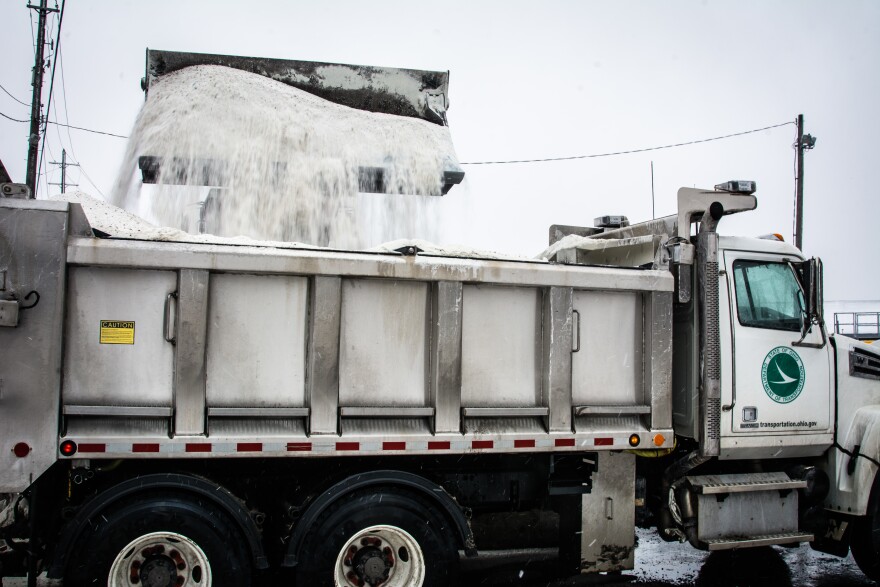Ohio leaders are initiating a new effort to reduce road salt runoff and water contamination.
Earlier last month, Governor Mike DeWine and the Ohio Environmental Protection Agency announced the H2Ohio Chloride Reduction Grant Program. $1 million will be distributed to local municipalities for equipment upgrades to prevent the over-application of salt on roads.
From now through January 31, municipalities, townships, counties, and other governmental agencies can apply for grants of up to $75,000.
Melting snow and rain carry excess road salt into rivers and streams.
According to the Ohio EPA, this can lead to salinization of local soil and waterways. Heavy salt runoff can be toxic to aquatic life and can also pollute drinking water sources.
Ohio EPA director Anne Vogel said this program will help communities de-ice roads without compromising the environment as much.
“We know that, you know, 30 million tons of salt are used on the roads across the country. And so we're not the only state facing this issue and dealing with this in terms of water quality,” she said. “But we are going to be one of the first states to help our communities deploy these best practices.”
Vogel said the grant can be used for things such as purchasing brine mixers and upgrading salt storage facilities.
The Ohio Department of Transportation also plans to push out a public education campaign for local governments on the risks associated with over-salting roads.
To prevent ice from developing on our roads, the department applies a salt brine solution.
This helps to reduce the amount of salt used overall, and provides a more accurate application.
The brine is made up of 23 percent salt and 77 percent tap water.
Matt Bruning from the Department of Transportation says there are more than just environmental benefits.
“We're talking pennies [to] the gallon is what it costs to make salt brine. So there's a cost factor there. It's also just more effective. So you look at all of those different factors, you bring them all together and you say, ‘well, this kind of makes more sense to do it this way.’”
Since the winter of 2018 through 2019, the department’s salt usage per lane mile has decreased from 22 tons to nine tons.



